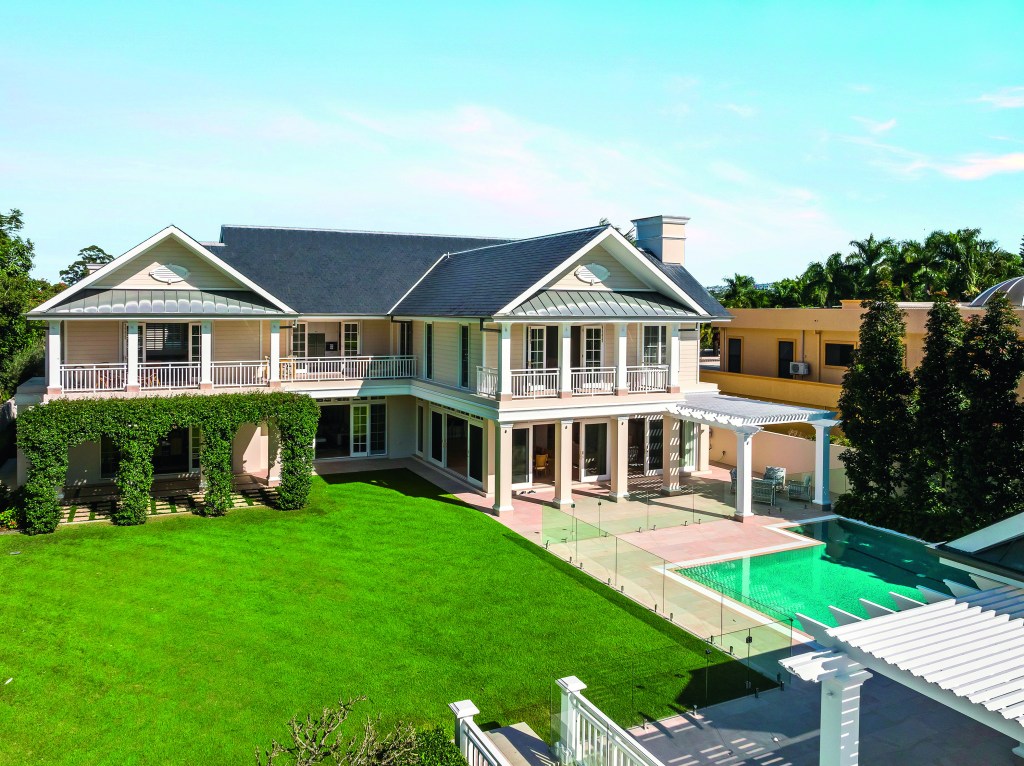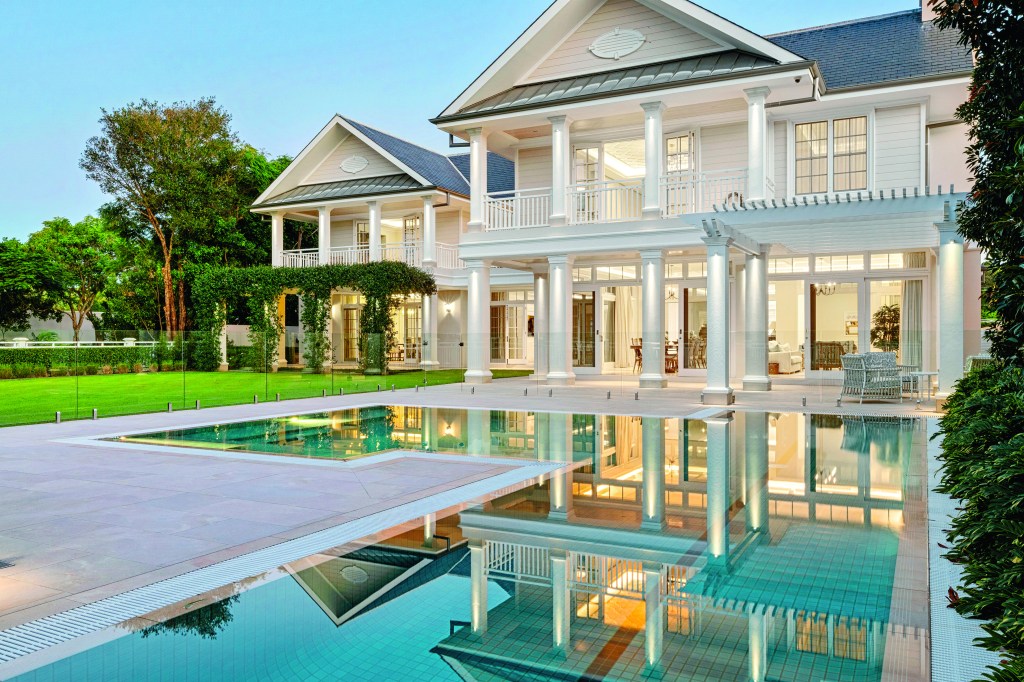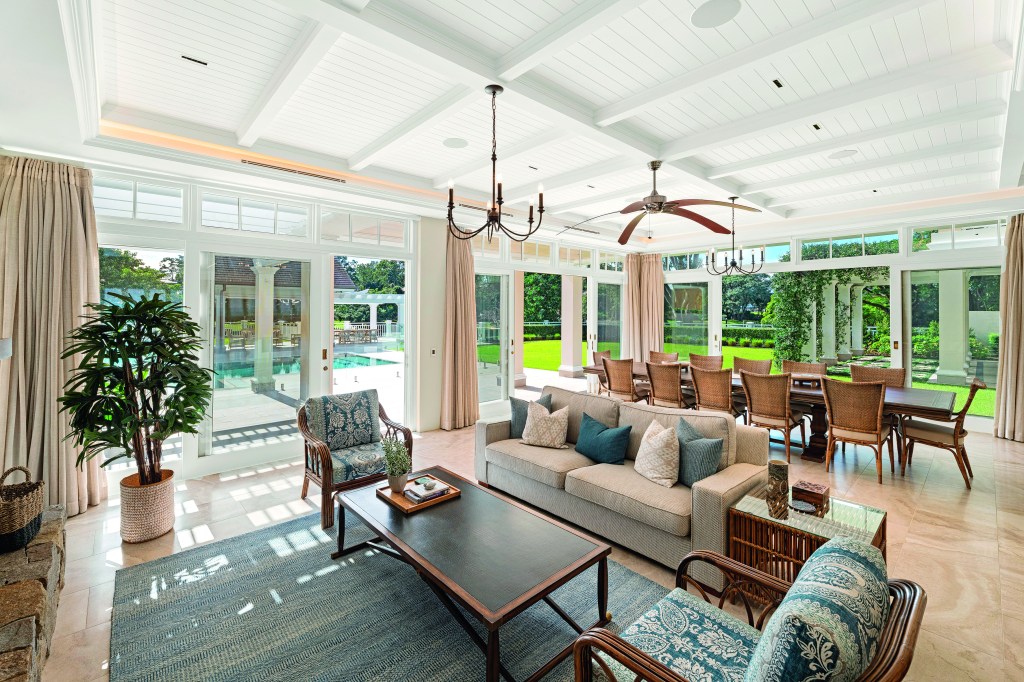Flight to “safety” adds extra glitter to Sunshine State’s luxury property market.

Business is booming in Queensland’s lifestyle hot spots, while the entire prestige sector remains unflustered by interest rate rises and underpinned by a shortage of luxury homes. Queensland’s luxury property market continues to outperform its southern cousins, where prices have remained sluggish since they were hit by the COVID-19 pandemic in early 2020. But, so long as there is no further deterioration in the geopolitical scene, the entire prestige sector is expected to remain strong over the next year, say market watchers.
The prolonged pandemic lockdowns in Victoria and NSW – with Melbourne experiencing one of the longest in the world – buoyed the Sunshine State’s prestige sector, says Dr Andrew Wilson, Chief Economist at My Housing Market.
“Queensland was very much the beneficiary of the COVID exodus,” says Wilson. “It’s been a significant force in Brisbane and Gold Coast house prices, along with some areas of the Sunshine Coast.” For example, Queensland Sotheby’s International Realty has handled some “very significant sales” in the state’s so-called ‘lifestyle locations’ of the Gold Coast, Sunshine Coast, Noosa, the Whitsundays and Port Douglas, according to the agency’s owner and CEO, Paul Arthur.
New records expected to be set
“There was a bit of a flat spot in May, June and July, but in the last 60 days we’ve seen more luxury property transacted across Queensland than we did at the height of the market in November last year,” says Arthur. In the space of a few weeks, Amir Mian of Amir Prestige Properties sold properties on the Gold Coast for $23.75 million at Southport, $19 million at Mermaid Beach (F45 fitness group co-founder Rob Deutsch was the buyer) and $20 million in Carrara.

He’s now finalising the sale of former 500cc motorcycle world champion Mick Doohan’s luxury property, which went to auction in late September. Mian says he has received multiple offers around the $40 million mark, which means the sale could set a record for the highest price ever paid for a residential property in Queensland. Doohan’s 18-hectare estate at Coomera, known as Diamond Head, has 10 bedrooms and bathrooms, a helipad, private jetty, cinema and a 2000-bottle wine cellar. Past houseguests include Brad Pitt and Johnny Depp.

Cooler markets down south
Elsewhere, a combination of factors have contributed to a comparatively sluggish prestige market. The closure of international borders made it difficult for international buyers, while Australia’s underperforming share market dampened interest.
“The prestige market has been lagging behind the rest of the property market for some time,” says My Housing Market’s Wilson. “There used to be a lot of chatter about trophy homes … but we haven’t seen that energy for a few years.” Wilson says higher interest rates haven’t had much impact on the luxury market and he thinks talk of the negative impact of higher interest rates may have been oversold. He says Australia’s market is already showing signs of moving into “revival mode” in Sydney and Melbourne.
Hope on the horizon
Forecasters expect to see higher growth in the luxury property market but it is starting from a comparatively low base. In September, both markets began to show signs of picking up. “We’re starting to move through the worst of the downturn already,” says Tim Lawless, executive research director of CoreLogic’s Asia Pacific research division. “But it is still early days, and I’d want to see a few more months of data before calling it a trend.” Something that always works in favour of prices in the prestige market is scarcity. “Across the blue-chip markets of Australia, these homes tend to be tightly held,” says Lawless.
Supply could really drive value and we expect to see a gradual pickup in demand from domestic and overseas buyers.” With ‘Fortress Australia’ becoming a distant memory, migration to Australia is normalizing, according to Australian Bureau of Statistics data from March. However, it will take longer for high wealth migration to regenerate to pre-pandemic levels, says Wilson. And, he adds, supply isn’t expected to increase anytime soon, thanks to green and red tape and a shortage of building materials and labour.
“There is an underlying shortage of housing that works its way up from the bottom into the prestige market,” he says. “The other factor is skyrocketing building costs.”
All of which points to a strong performance for the luxury property sector over the coming year. “The disclaimer on that is that it will depend on how the equity markets perform going forward,” he says. Arthur believes that Australia’s luxury property market will remain buoyant so long as a certain level of stability is maintained across the world. “As long as we don’t see any (more) really major global issues … I think the next 12 months will be strong. Australians still have a lot of money, and they are still investing it in property.”